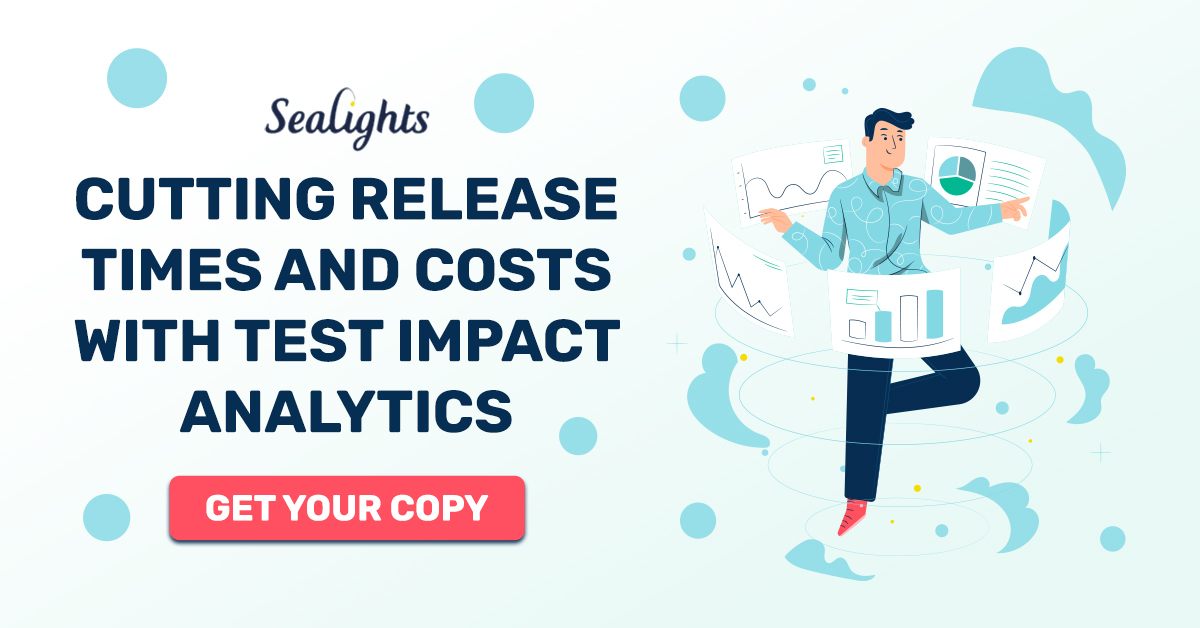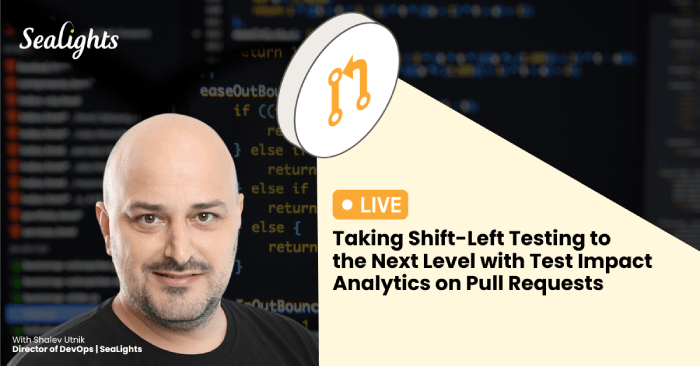WHAT'S NEW AT SEALIGHTS
May 17th, 2023
May Product Releases
SeaLights Product Release
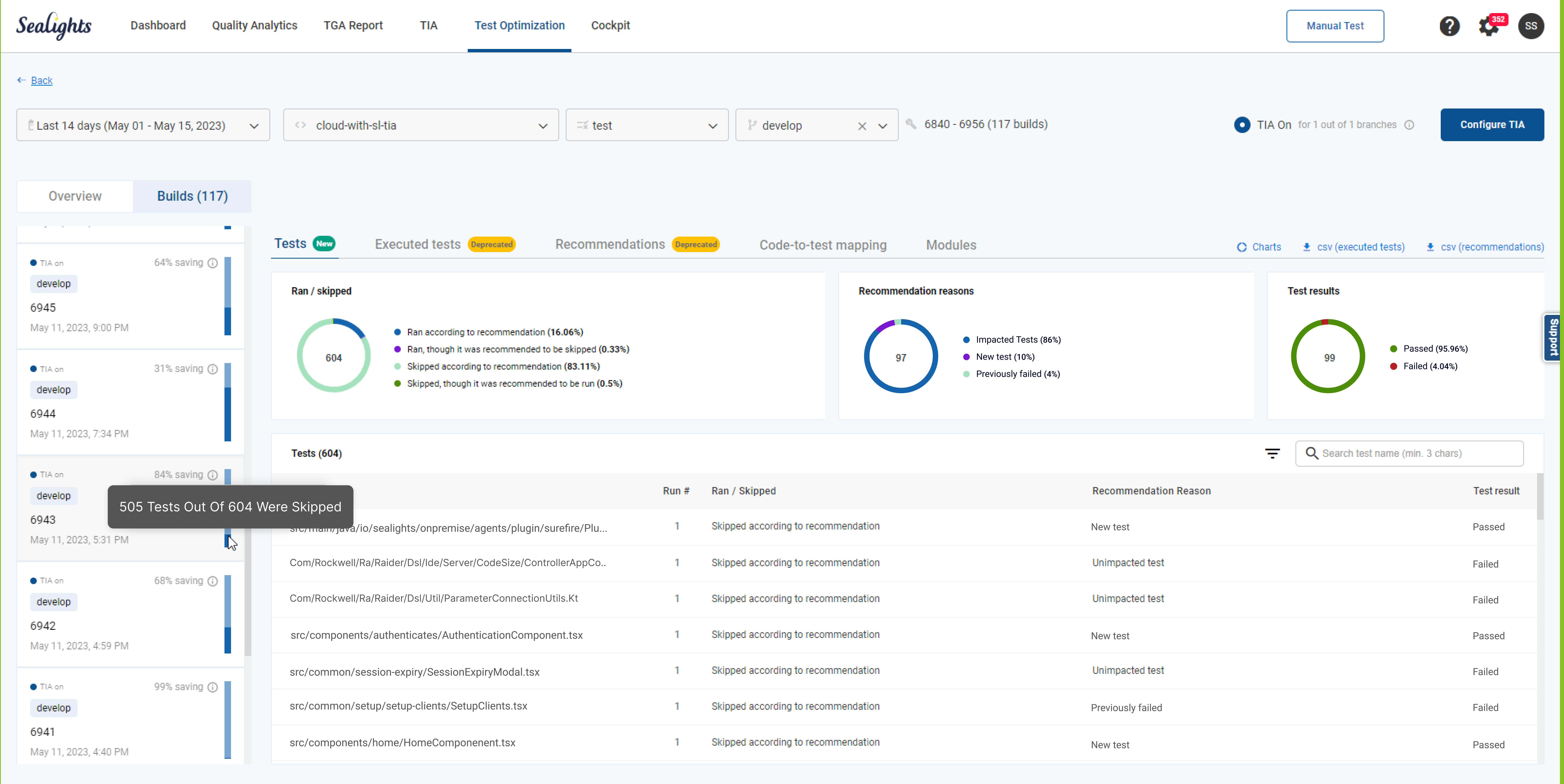
See how you can cut testing cycle time and increase release speed latest features and updates – including new features, integrations, frameworks and development languages support, powerful analytics, and optimized dashboard experiences.
Test Impact Analysis for Pull Requests
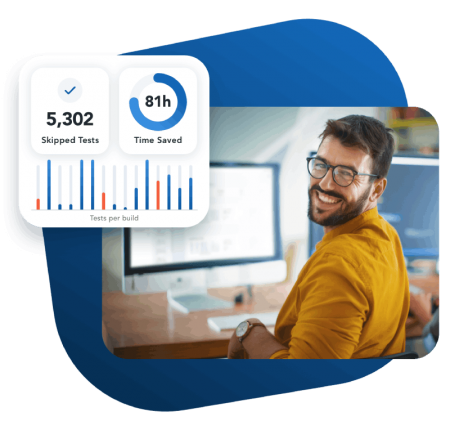
In our latest product update, you can now receive recommendations for every test type (including Acceptance, E2E, Functional, and more) directly within your PRs for branches that are already onboarded.
This feature enables customers to shift Left their lengthy test stages, running only impacted tests before merging.
Latest Content
Technological Support
Development Languages Support for
Coverage and Test Gap Analysis
We now support :
.Net Core for both Windows and
Linux, Typescript for NodeJs and Frontend frameworks.
Testing Frameworks Support for
Test Impact Analysis
We now support :
.Net: MsTest, nUnit, xUnit
Python: Pytest, Nose, Unittest
Golang: built-in unit-test capabilities
All Technologies: Cypress, Playwright, testCafe, Gauge.
February 9th, 2022
Build a Data-Driven Testing Strategy Using Quality Analytics
Quality Analytics Reports
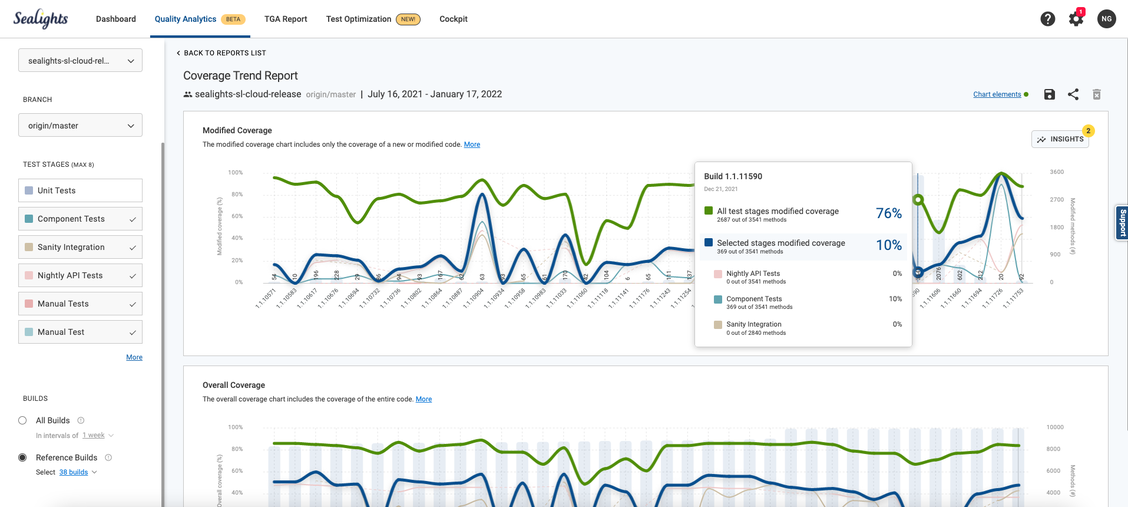
Coverage Trend Report
The Coverage Trend Report allows you to track a specific app/service’s modified and overall coverage, across different time intervals or builds, and with a break-down to the different testing stages.
The dynamic UX allows you to change report parameters, as well as add/remove chart elements to analyze the context of the data shown.
Quality Analytics Reports
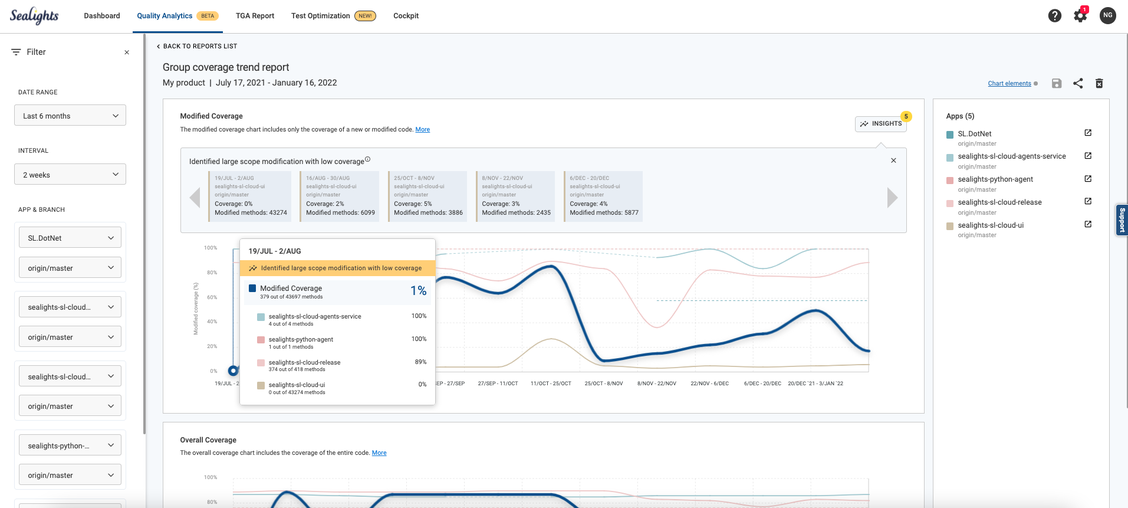
Group Coverage Trend Report
The Group Coverage Trend Report allows you to track multiple applications or services in one report. Automatic Insights appear at the top of the report, helping you identify potential quality risks and improve your products’ quality.
Do You Have the Right Testing Strategy?
Watch the recording of the Webinar on how to create a data-driven testing strategy using SeaLights Quality Analytics.
What’s Next?
Want to learn what a test strategy is and how to develop a test strategy that works for you and your business? Join our webinar “Test Strategies for a Modern World that Demands Quality at Speed” on March 15th, 2022.
Have any questions? Contact your Customer Success Manager or SeaLights support at [email protected]
January 5th, 2022
Test Smarter with SeaLights Test Optimization
Shorten Your Testing Cycle
Time by 50%-90%
With the growing number of builds and frequency of releases, the software and QA teams are struggling to maintain the high quality of their builds and complete test cycles on time. This is where SeaLights is breaking the ground with Test Impact Analysis which is a part of our Test Optimization solution. In the coming year more capabilities will be added, such as Test Impact Analysis for pull request, test prioritization, code to test map, and test insights.
Shorten your long testing cycles while increasing quality
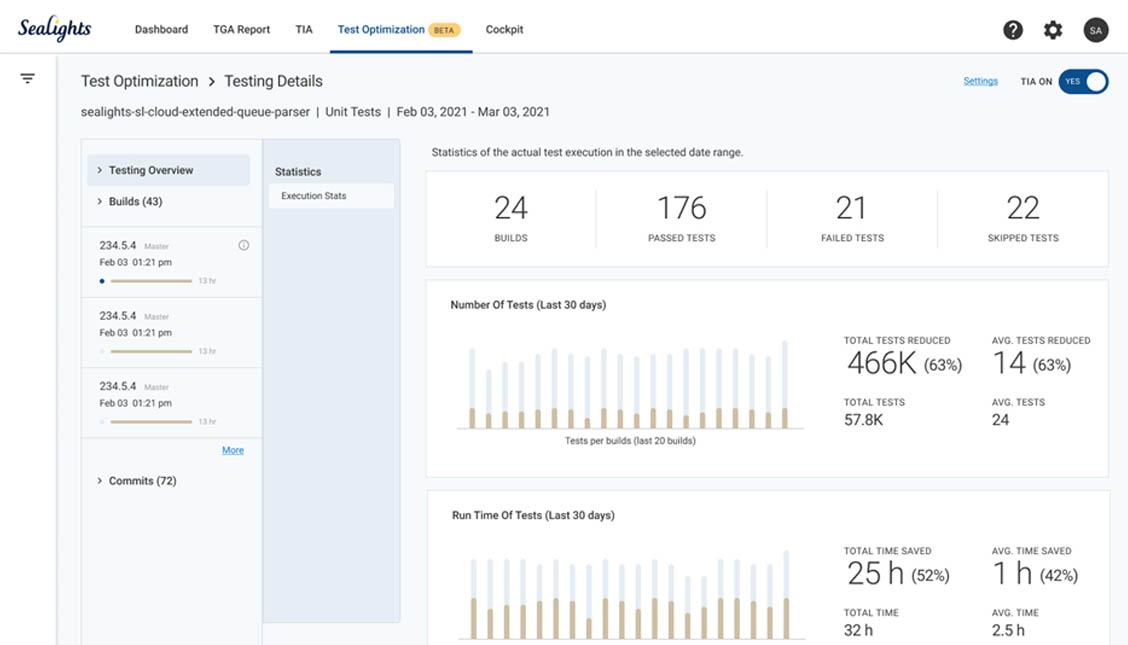
Manual Testers get test Execution recommendations!
Scaling manual tests is timely and costly. SeaLights’ Test Impact Analysis uses AI to evaluate manual tests that have been previously executed so that manual testers know exactly which tests they need to run and release hotfixes efficiently, quickly, and with higher confidence.
We Work with Any Testing Framework with Test Impact Analysis Public API
When SeaLights is integrated with an automated testing framework, the selective list of recommended tests is fed automatically into the testing framework. While SeaLights supports many frameworks, Test Impact Analysis public API is available if your framework is not on the testing frameworks list.
Want to Learn More? Learn How to Use SeaLights’ Test Optimization
Our online training program will show you step-by-step how to use SeaLights’ Test Optimization and adjust it to your needs.
Test Optimization Online Training Program >
Test Optimization Common Use Cases >
Have any questions? Contact your Customer Success Manager or SeaLights support at [email protected]
What’s Next?
Join us on January 19th to learn more about one of SeaLights’ newest features, Quality Analytics. Stop guessing about software quality and learn how to create a data-driven testing strategy using SeaLights’ Quality Analytics.
Want to learn how to use SeaLights’ Test Impact Analysis to shorten your testing cycles with Katalon (or any other testing framework)? Register for our webinar “How to Optimize Katalon Test Automation with SeaLights” on February 1st, 2022.
November 30th, 2021
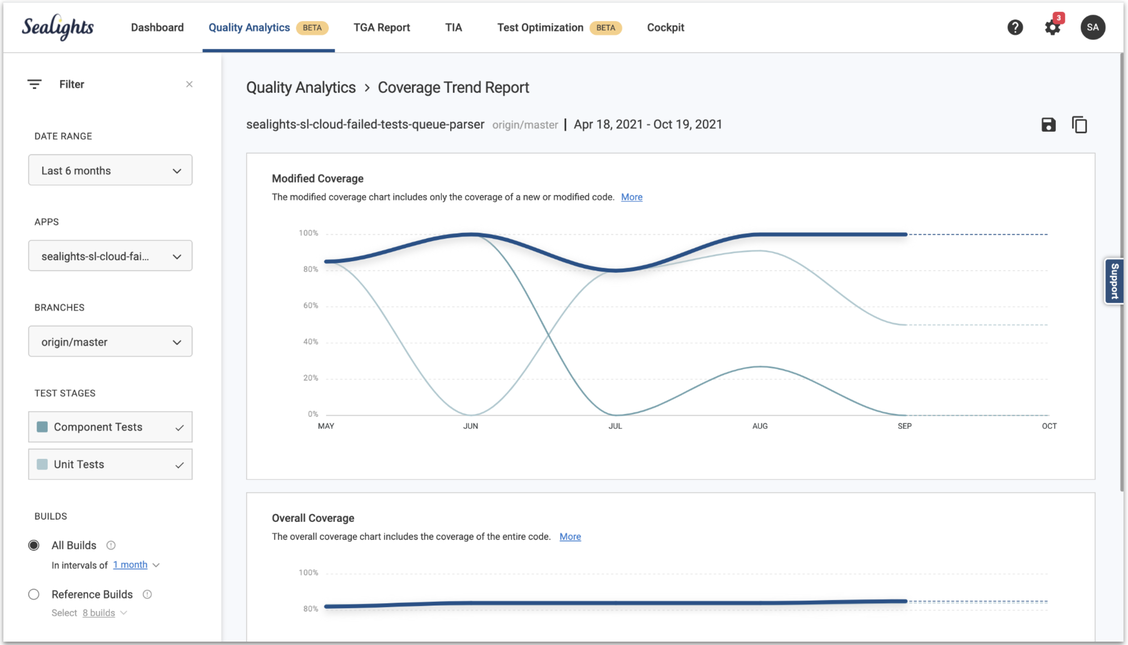
Product Highlights
SeaLights Chrome Extension for Developers, Code Reviewers and Quality Managers. Version 1.8.10 is available!
Review your untested code changes directly inside your source code management tool (Github, Gitlab, BitBucket and Azure DevOps).
No need to sign in, just download the chrome extension and manage it all in one place.
Take two minutes to set it up >> click here

Quality Analytics
Quality Analytics is a new tool that provides organizations an overview of their software quality trends across all test stages over time. With this tool, you can easily analyze what affects your quality the most, what is the impact of your different test stages, what your quality trend looks like, where your quality pain points are, and much more.
Customer Story: Datafaction Increased Software Quality by 65% with SeaLights’ Intelligent Testing
Another week, another exciting webinar with a customer! This week’s webinar explored how Datafaction revolutionized its quality culture with SeaLights’ advanced quality metrics. With SeaLights, Datafaction reduced its regression testing from one week to one day, without compromising on code quality and meeting all its release deadlines.
Click here to hear more about how SeaLights helped Datafaction.
Katalon is Now Optimized with SeaLights
Katalon users can now benefit from SeaLight’s Test Optimization tool to shorten their testing execution time. Katalon has created a SeaLights’ Test Optimization plugin that is now available in Katalon’s Marketplace under the name” SeaLights Integration”. The Katalon plugin is an easy-to-use integration, now available out of the box once the plugin is configured.
You can install SeaLights plugin from Katalon Marketplace here.
Save the date! Register for the webinar “How to Optimize Katalon Test Automation with SeaLights” on February 1st, 2022 to learn how a combination of test automation and test optimization empowers your organization to test faster and smarter. Save your spot here.
October 19th, 2020
Usability Improvements
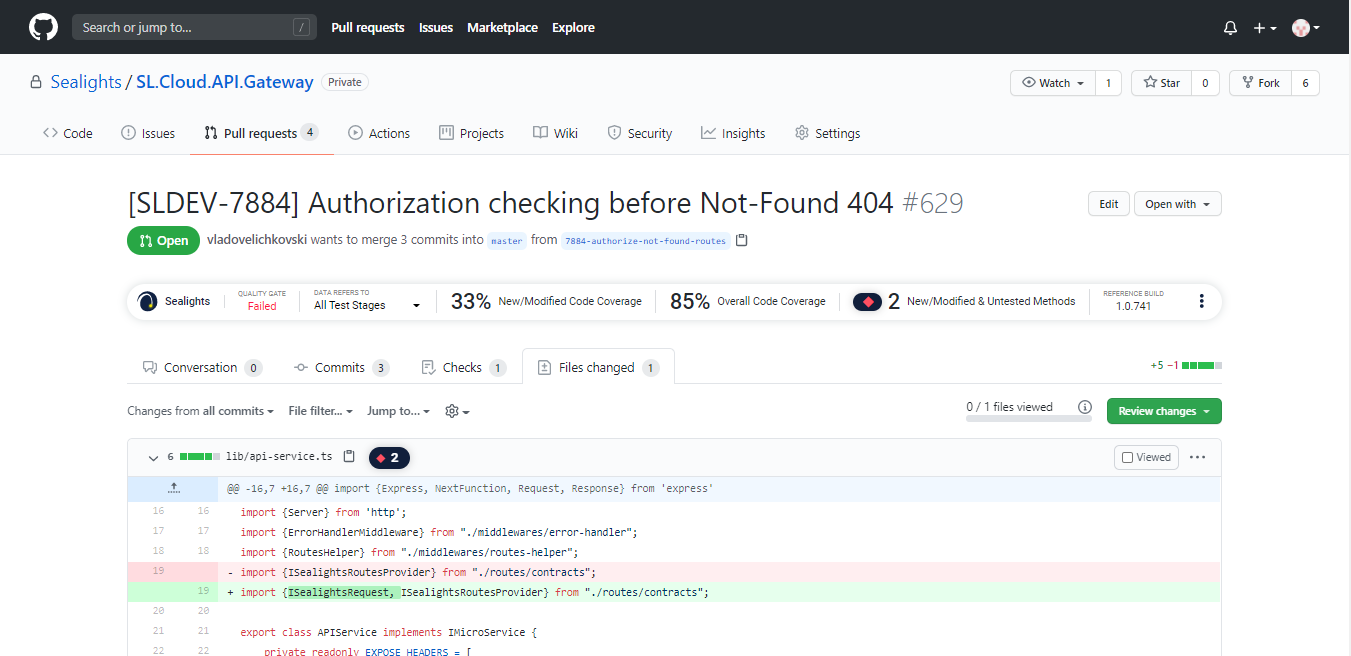
Improved navigation and display in Pull Request viewer
(in your SCM using the Chrome Extension) to allow pull request approvers to make better-informed decisions:
Additional data and metrics in pull request SeaLights toolbar
- Pull request quality gate result
- Overall coverage
- Reference build
Improved Dashboard Search Functionality
The search function on the dashboard will now return results from all applications and not just the set already loaded on the dashboard.
Cockpit enhancements for SeaLights DevOps users
Cockpit shows the status of coverage data provided by each agent so you can see when and whether an agent sent coverage data from the application server or browser
Scalability Improvement for large applications
SeaLights is now much faster at calculating quality risks for large data sets.
Performance Improvement
The core component of the SeaLights Analysis Engine has gone through a major refactoring, it was redesigned to handle large number of application services and large number of builds and test executions as well as extra large application monoliths
April 30th, 2020
Public APIs
SeaLights’ Public API provides an ability to query data which can be displayed to stakeholders through other systems/dashboards used in the company
Full API Reference
Accessible from SeaLights UI, Quick Start Guide and code samples
Revised SeaLights Public APIs
For getting full build data (Coverage / Metadata / Tests State), set/get Quality Gates, Integration Build management, set/get TGA Report, get Audit Log data and more.
Dashboard
Code Labels
Code Label Rules definition now facilitates scenarios where the same rule should be applied to multiple apps. The user can apply a rule to all apps whose name begins with a prefix, or to apps selected from the full list
Coverage Report Enhancements
- Faster loading time
- Coverage Report will include by default, only code that is scoped, unignored and modified. This is a toggle that can be switched off to include the entire code base
Installation & Configuration
SeaLights Cockpit – Lab Monitor
Lab Monitor is a new item under Cockpit, that provides the user with another view of the configuration – in a lab timeline orientation. It shows the agents that were active during the selected time range.
SeaLights Settings – Recommended Agent Versions
Agent Versions allows the authorized user to lock the installed agent version, rather than automatically run the latest version available. This is useful when it is necessary to guarantee compatibility between agents and host frameworks.
Simplified CI Configuration
Providing BuildSessionID for Test Runners as part of the configuration process is no longer required. This capability significantly simplifies a new app’s configuration process with Sealights.
Settings
Reorganized menu for easier navigation
SeaLights Chrome Extension, for SCM Pull Requests and Code Viewers
Easy Navigation
When a pull request or file includes multiple annotations of utested code changes and they are far apart, our new addition allows easy navigation between annotations.
Support Mass Deployment of SeaLights Chrome Extension
Chrome Extension can now be automatically installed and updated on users machines, utilizing management tools such as Group Policy. Mass deployment also includes extension configuration by auto-running a simple script after installation
January 16th, 2020
Enhanced SeaLights Dashboard
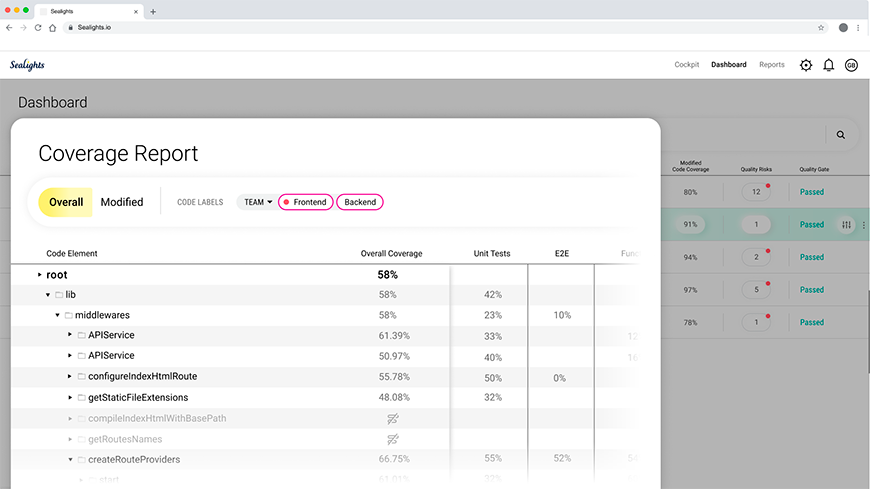
Coverage report
We added hierarchical views for each app’s coverage stats, cross test stages, and more, to our coverage reports. The updates will be released on January 28th, 2020.
Quality gates:
A new UI providing a completely overhauled UX was released on October 2019.
Excluded methods:
Starting January 28th, 2020 it will be possible to configure methods that should be ignored in your Settings.
Revamped Pull Request integration
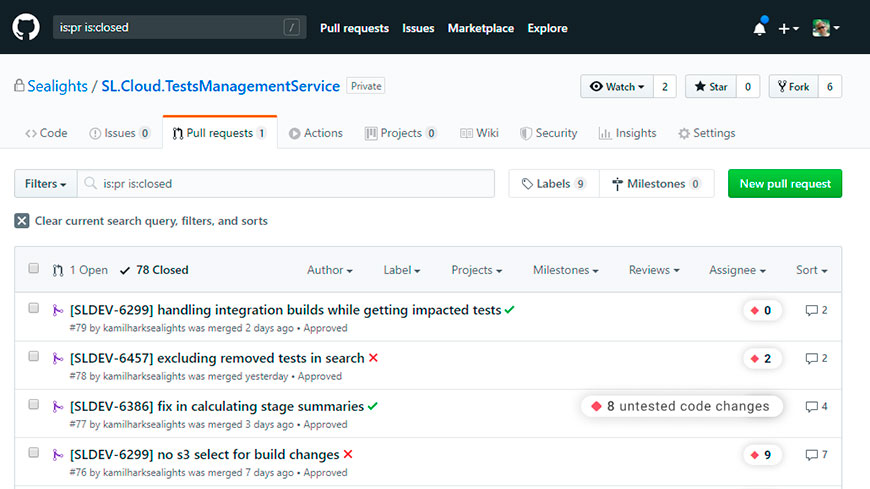
Improved UX
We put a lot of effort into improving the Pull Request integration UX in 2019.

SeaLights Chrome extension
All Pull Request integrations will be based on our Chrome extension starting January 28th, 2020.
Watch this video to learn how to fully install
SeaLights Chrome Extension:
Supported platforms
Starting January 28th, SeaLights will supports most popular platforms, including Github Enterprise, Github Cloud, Bitbucket Server, Bitbucket Cloud, Gitlab Server, Gitlab Cloud, VSTS (Azure DevOps), and TFS 2018.
Improved Test Impact Analytics
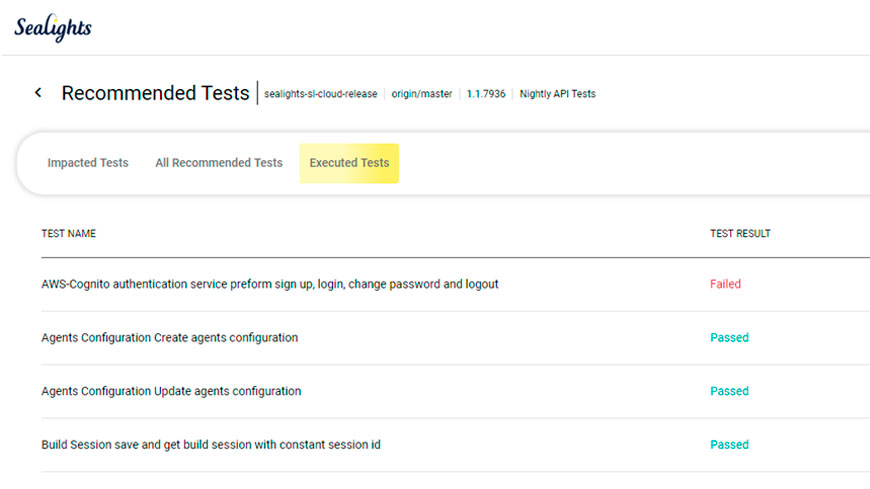
Executed Test tab
“Executed Tests” in a new tab aside “All Recommended” Tests tab starting January 28th, 2020. It lists the tests that were actually executed in the context of the specific app/branch/build/test-stage combination. The list includes test names and test results (Passed/Failed/Skipped).
Java unit tests
We introduced support for Java unit tests in December 2019. You can now build and test your code on a module-by-module basis.
Excluded methods:
Starting January 28th, 2020 it will be possible to configure methods that should be ignored in your Settings.
Cockpit Upgrades
Build Monitor
The improved Build Monitor UI offers richer insight presentation, while highlighting associations between insights and agents.
Notification improvements
Email notifications
Numerous minor enhancements were introduced to the Notifications area to ensure clarity and consistency.
Unprecedented agent advancements
.NET agent
Version 2.0.1, that will be released on January 28, 2020, offers:
- Support for Azure App Services
- Clear Lambda and async method naming conventions
- The exclusion of certain auto-generated code from quality risk assessment. Code resulting from LINQ expressions, List objects, elastic components, and iterators, is now specifically excluded.
- Recommendations for projects using MsTest 1&2 and xUnit in Test Impact Analytics
Java agent
The latest version, released on December 2019, includes:
- Groovy support for Top Quality Risks and Test Gap Analysis
- Major performance improvements when using the reuseForks=false flag in Surefire.
- Test Impact Analysis
- TIA for Unit Tests running by Maven Multi-Module Projects
- Support in Cucumber using JUnit and TestNG.
- Support in SoapUI.
Ruby agent
The latest version, released on late 2019, supports:
- Test Impact Analytics for tests running using Ruby RSpec.
Python agent
The latest version, released on late 2019, supports:
- Python 3.7
- Test execution using Xdist
